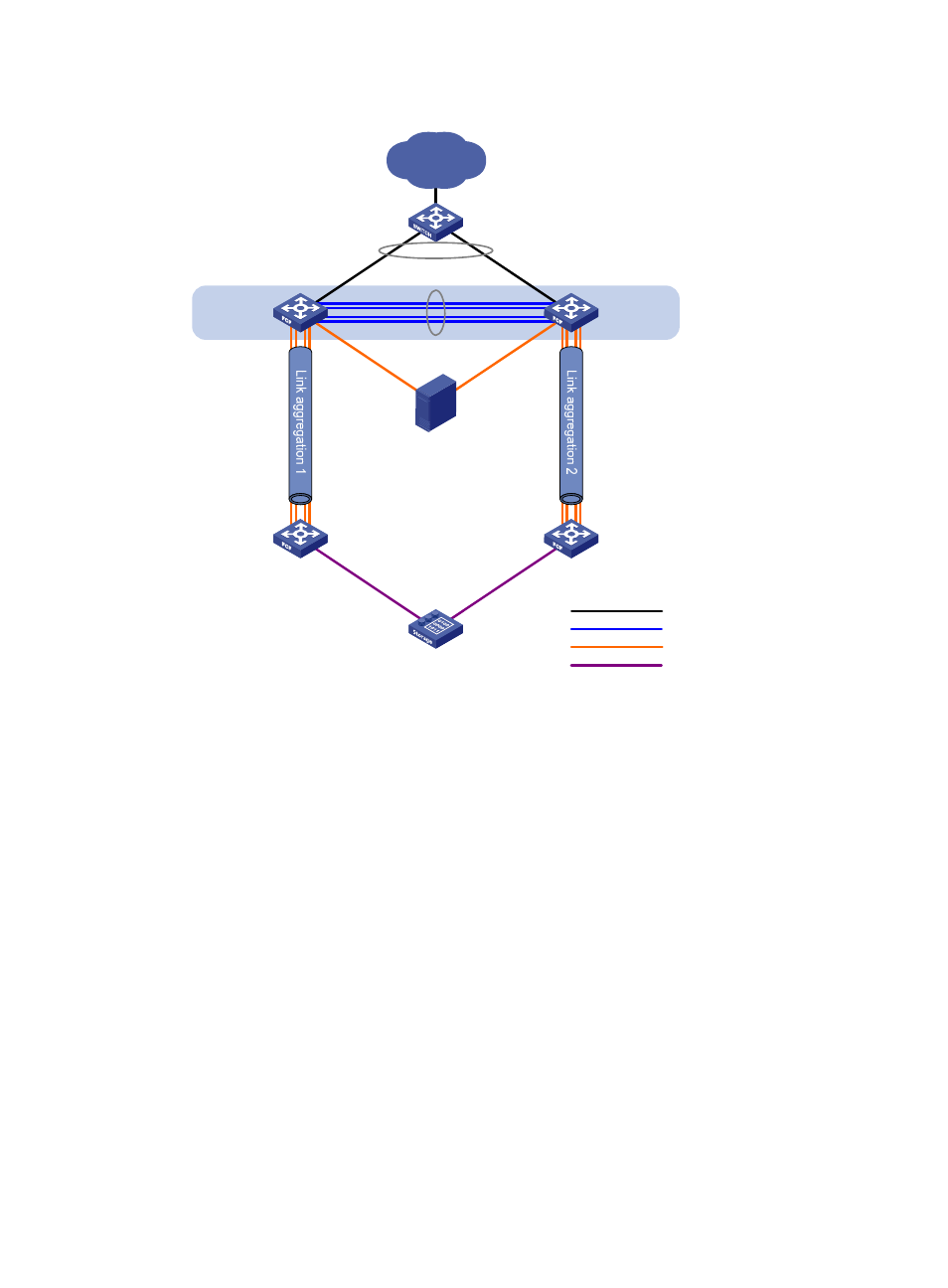Requirements analysis – H3C Technologies H3C S5830V2 Series Switches User Manual
Page 203

192
Figure 47 Network diagram
Requirements analysis
To uniformly manage Switch A and Switch B and implement backup between them, configure Switch A
and Switch B to form an IRF fabric, with Switch A as the master device. The IRF fabric operates at the
access layer of the LAN and operates as the FCF switch of the SANs.
To increase the bandwidth for the link between the IRF fabric and the Ethernet switch, aggregate the links
from the Ethernet switch to Switch A and Switch B to form a multi-chassis aggregate link, Ethernet
aggregate link 3.
To transmit the storage traffic over lossless Ethernet links in the SANs, perform the following tasks:
•
Configure DCBX, PFC in auto mode, and ETS on the Ethernet interfaces connecting the switches to
the server.
•
Enable PFC by force on the Ethernet interfaces connecting switches.
To implement link backup between the server and the disk device, use two separate SANs to provide
connections between the server and the disk device. The two separate VSANs are as follows:
•
One physical SAN is formed by the server, the IRF fabric, Switch C, and the disk device.
•
The other physical SAN is formed by the server, the IRF fabric, Switch D, and the disk device.
To transmit the Ethernet traffic of the LAN in VLAN 1001, configure the Ethernet interfaces connecting the
IRF fabric to the LAN and the server to allow VLAN 1001.
Ethernet
switch
LAN
FCF switch
FCF switch
FCF switch
Disk device
Server
Ethernet link
IRF link
FCoE link
XGE1/0/10
XGE2/0/10
XGE1/0/1
VFC1
XGE2/0/1
VFC2
XGE1/0/1
XGE1/0/1
FC1/0/1
FC1/0/1
XGE1/0/5 to XGE1/0/8
VFC10
XGE1/0/5 to XGE1/0/8
VFC10
XGE2/0/5 to XGE2/0/8
VFC11
XGE1/0/5 to XGE1/0/8
VFC10
Switch A
Switch D
Switch C
FCF switch
Switch B
FC link
